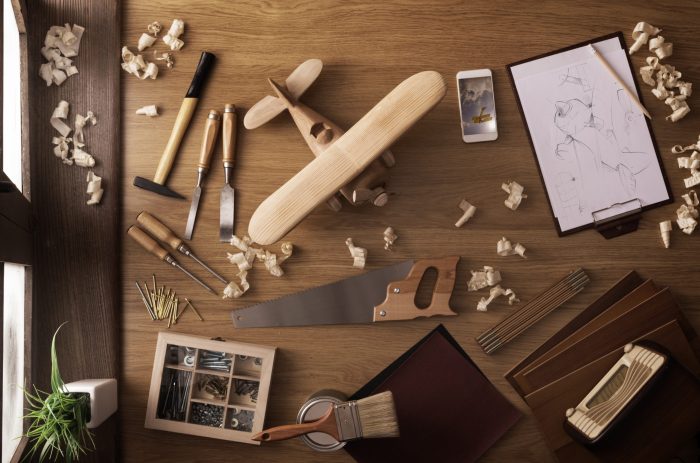Woodworking, a timeless craft, has shaped civilizations and continues to inspire creativity today. From the earliest tools to modern machinery, woodworking has evolved alongside humanity, reflecting our ingenuity and connection to nature. This journey explores the history, techniques, and artistry that define this enduring craft.
This exploration will delve into the fascinating world of woodworking, covering its rich history, essential tools and techniques, the diverse types of wood and their properties, captivating project ideas, safety considerations, and its enduring relevance in modern society.
History of Woodworking
Woodworking is an ancient craft that has been practiced by humans for millennia. It has played a crucial role in the development of human civilization, shaping our homes, tools, and even our cultural identities. This journey, from rudimentary tools to sophisticated machinery, reveals the evolution of woodworking practices across different cultures and time periods.
Early Beginnings
Woodworking emerged as a necessity for survival in the earliest human societies. The earliest tools, like hand axes and simple knives, were crafted from stone and used to shape wood for basic needs. The discovery of fire allowed for the creation of more complex tools, like sharpened sticks and fire-hardened wood, leading to more refined woodworking techniques. These early woodworking techniques were used to create shelters, furniture, and tools, laying the foundation for the future development of the craft.
Ancient Civilizations
Ancient civilizations like Egypt, Mesopotamia, and China developed sophisticated woodworking techniques that influenced later generations.
Ancient Egypt
The Egyptians mastered woodworking for building elaborate tombs, temples, and furniture. They utilized tools like chisels, saws, and planes, and developed techniques like joinery and woodturning. Their craftsmanship is evident in the intricate carvings and furniture found in the tombs of pharaohs, showcasing the precision and artistry of their woodworking practices.
Ancient Mesopotamia
The Mesopotamians, known for their advanced civilizations, also excelled in woodworking. They used tools similar to those of the Egyptians, but also developed unique techniques like lamination, a process of joining thin layers of wood to create stronger and more durable structures. Their skills are reflected in the intricate furniture, chariots, and other wooden objects discovered in archaeological excavations.
Ancient China
Ancient Chinese woodworking techniques were equally impressive, with a focus on both functionality and aesthetics. They developed techniques like mortise and tenon joinery, which allowed for strong and durable structures without the use of nails or glue. Their woodworking traditions, passed down through generations, continue to influence modern Chinese furniture and architecture.
Medieval and Renaissance
During the Medieval period, woodworking played a crucial role in building cathedrals, castles, and other large structures. The use of hand tools like chisels, planes, and saws continued to evolve, with the introduction of new techniques like dovetail joinery. The Renaissance witnessed a resurgence in artistic expression, with woodworking becoming an integral part of the artistic movement. This period saw the development of new tools like the lathe and the introduction of decorative techniques like marquetry and intarsia.
Industrial Revolution
The Industrial Revolution marked a significant shift in woodworking practices. The invention of steam-powered machinery like the saw mill and the planer transformed the craft, allowing for mass production of wooden goods. New tools like the band saw and the router further revolutionized woodworking, increasing efficiency and precision. The Industrial Revolution also led to the development of new materials, like plywood and particleboard, which expanded the possibilities of woodworking.
Modern Woodworking
Modern woodworking is a blend of traditional techniques and advanced technology. The use of computer-aided design (CAD) and computer-aided manufacturing (CAM) has significantly enhanced precision and efficiency in woodworking. New tools like laser cutters and CNC routers allow for intricate designs and complex shapes to be created with ease. Modern woodworking also embraces sustainable practices, using recycled and sustainably sourced wood, minimizing waste and promoting environmental responsibility.
Woodworking Tools and Techniques
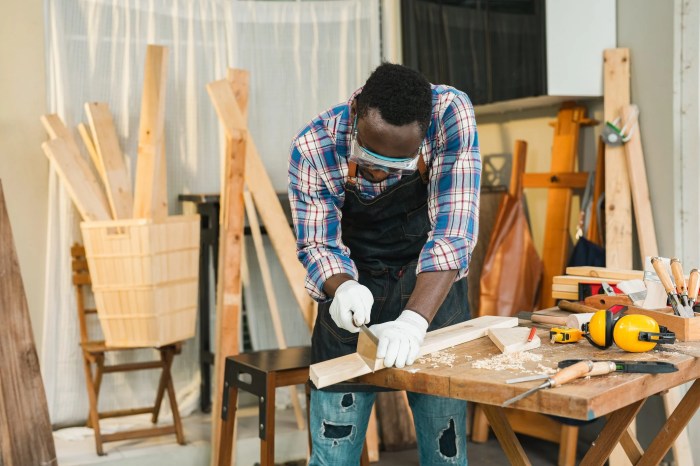
Woodworking is an art and craft that involves the shaping and manipulation of wood to create various functional and decorative objects. From simple furniture to intricate sculptures, woodworking encompasses a wide range of projects that require a diverse set of tools and techniques.
Essential Woodworking Tools
Woodworking tools are essential for performing various tasks, from cutting and shaping wood to joining pieces and finishing the final product. The following is a list of essential woodworking tools:
- Hand Saw: Used for cutting wood to length and shape. Different types of hand saws are available, such as crosscut saws, ripsaws, and coping saws, each designed for specific cutting tasks.
- Chisel: A sharp-edged tool used for carving, shaping, and removing wood. Chisels come in various sizes and shapes, each suitable for different applications.
- Plane: A tool used for smoothing and flattening wood surfaces. Planes come in various sizes and types, including block planes, jack planes, and jointer planes.
- Hammer: Used for driving nails, chisels, and other tools. Different types of hammers are available, such as claw hammers, ball-peen hammers, and rubber mallets.
- Screwdriver: Used for driving screws into wood. Screwdrivers come in various sizes and types, including Phillips head, flat head, and Torx head.
- Drill: Used for drilling holes in wood. Drills come in various sizes and types, including cordless drills, corded drills, and drill presses.
- Measuring Tape: Used for measuring wood and other materials. Measuring tapes come in various lengths and types, including retractable tapes, tape measures, and ruler tapes.
- Level: Used for ensuring that surfaces are level and plumb. Levels come in various lengths and types, including torpedo levels, box levels, and laser levels.
- Sandpaper: Used for smoothing and finishing wood surfaces. Sandpaper comes in various grits, with finer grits used for smoother finishes.
- Clamps: Used for holding wood pieces together during assembly and gluing. Clamps come in various sizes and types, including bar clamps, spring clamps, and C-clamps.
Woodworking Techniques
Woodworking techniques involve various methods for shaping, cutting, joining, and finishing wood. These techniques are crucial for achieving desired results and creating quality woodworking projects.
Cutting Techniques
Cutting techniques are essential for shaping wood and preparing it for various applications. Some common cutting techniques include:
- Crosscutting: Cutting wood across the grain, creating a perpendicular cut.
- Ripping: Cutting wood along the grain, creating a parallel cut.
- Mitering: Cutting wood at an angle to create a precise join.
- Dadoing: Cutting a rectangular groove in wood to accommodate another piece.
- Rabbetting: Cutting a rectangular recess in the edge of wood to create a join.
Shaping Techniques
Shaping techniques involve modifying the shape of wood to create desired forms. Some common shaping techniques include:
- Planing: Using a plane to smooth and flatten wood surfaces.
- Chiseling: Using a chisel to carve and shape wood.
- Sanding: Using sandpaper to smooth and finish wood surfaces.
- Routing: Using a router to create precise cuts and shapes in wood.
- Turning: Using a lathe to shape wood into round forms.
Joining Techniques
Joining techniques are used to connect wood pieces together to create larger assemblies. Some common joining techniques include:
- Butt Joint: A simple joint created by butting two pieces of wood together.
- Lap Joint: A joint created by overlapping two pieces of wood.
- Mortise and Tenon Joint: A strong joint created by fitting a tenon (projection) into a mortise (recess).
- Dovetail Joint: A strong and decorative joint created by interlocking tapered pieces of wood.
- Glue Joint: A joint created by bonding wood pieces together with glue.
Finishing Techniques
Finishing techniques are used to protect and enhance the appearance of wood. Some common finishing techniques include:
- Sanding: Smoothing and refining wood surfaces to prepare them for finishing.
- Staining: Coloring wood to enhance its natural grain or create a desired color.
- Varnishing: Applying a clear protective coating to wood to enhance its durability and shine.
- Painting: Applying paint to wood to create a solid color or decorative pattern.
- Waxing: Applying wax to wood to provide a protective finish and enhance its shine.
Evolution of Woodworking Tools
Woodworking tools have evolved significantly over time, from simple hand tools to sophisticated power tools. The following table illustrates the evolution of some common woodworking tools:
| Tool | Traditional Tool | Modern Tool |
|---|---|---|
| Saw | Hand Saw | Circular Saw, Table Saw, Miter Saw |
| Plane | Hand Plane | Power Planer, Jointer |
| Chisel | Hand Chisel | Electric Chisel, Router |
| Drill | Hand Drill | Cordless Drill, Drill Press |
| Sandpaper | Sandpaper | Belt Sander, Random Orbital Sander |
Types of Wood and Their Properties
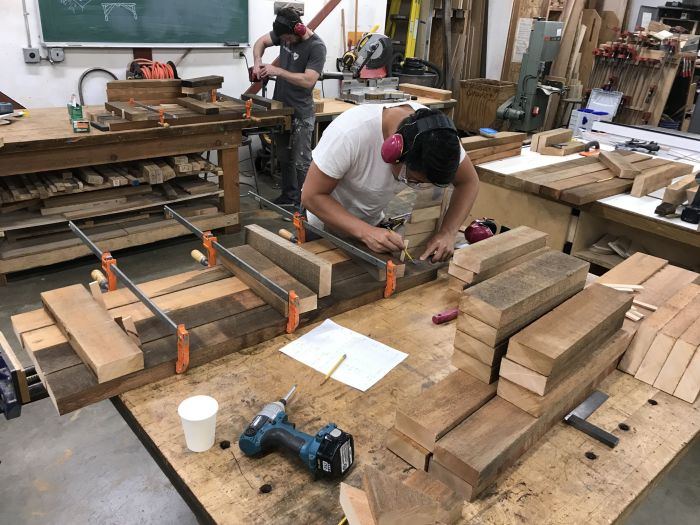
Wood is a natural material that has been used for centuries in construction, furniture making, and other crafts. It comes in a wide variety of species, each with its own unique characteristics and properties. Understanding the different types of wood and their properties is essential for choosing the right wood for your woodworking project.
Hardwoods and Softwoods
The terms “hardwood” and “softwood” are often used to describe different types of wood. However, these terms are not always accurate indicators of the wood’s actual hardness.
Hardwoods are typically denser and more durable than softwoods, and they come from deciduous trees, which lose their leaves in the fall. Softwoods, on the other hand, come from coniferous trees, which retain their needles year-round.
Classifying Wood by Grain
Wood grain refers to the pattern created by the arrangement of wood fibers. It is an important factor to consider when choosing wood for a project, as it can affect the appearance and strength of the finished product. The most common types of wood grain are:
- Straight Grain: Fibers run parallel to the length of the board, resulting in a consistent, even appearance.
- Interlocked Grain: Fibers twist and turn, creating a distinctive, wavy pattern.
- Curly Grain: Fibers form swirls and curls, adding a unique visual interest to the wood.
- Birdseye Grain: Small, round knots appear throughout the wood, giving it a speckled look.
- Fiddleback Grain: Similar to curly grain, but with a more pronounced, undulating pattern.
Classifying Wood by Hardness
The hardness of wood is measured by its resistance to indentation. This is an important factor to consider when choosing wood for projects that will be subjected to wear and tear. Here are some examples of wood types classified by their hardness:
- Hardwoods: Oak, maple, cherry, walnut, hickory, and mahogany are known for their high hardness and durability.
- Softwoods: Pine, fir, cedar, and spruce are generally softer than hardwoods and are often used for less demanding projects.
Classifying Wood by Durability
Durability refers to a wood’s ability to resist decay, insects, and other forms of damage. This is a crucial factor to consider when choosing wood for outdoor projects or furniture that will be exposed to the elements.
- Resistant to Decay: Cedar, redwood, and teak are known for their natural resistance to decay, making them suitable for outdoor use.
- Resistant to Insects: Redwood, cedar, and cypress are naturally resistant to insect infestations.
- Resistant to Moisture: Teak, mahogany, and cedar are known for their resistance to moisture, making them suitable for projects that will be exposed to water.
Examples of Wood Types and Their Properties
| Wood Type | Characteristics | Uses |
|---|---|---|
| Oak | Hard, strong, durable, with a distinctive grain pattern. | Flooring, furniture, cabinets, and construction. |
| Maple | Hard, strong, and durable, with a fine grain pattern. | Flooring, furniture, cabinets, and musical instruments. |
| Cherry | Hard, strong, and durable, with a reddish-brown color that darkens with age. | Furniture, cabinets, and trim. |
| Walnut | Hard, strong, and durable, with a rich brown color and distinctive grain pattern. | Furniture, cabinets, and gunstocks. |
| Pine | Soft, lightweight, and inexpensive, with a distinctive knotty grain. | Construction, furniture, and crafts. |
| Cedar | Soft, lightweight, and fragrant, with a natural resistance to decay and insects. | Outdoor furniture, siding, and decking. |
| Redwood | Soft, lightweight, and durable, with a natural resistance to decay and insects. | Outdoor furniture, siding, and decking. |
| Teak | Hard, strong, and durable, with a natural resistance to decay, insects, and moisture. | Outdoor furniture, boat decks, and flooring. |
Advantages and Disadvantages of Using Different Wood Types
Each type of wood has its own unique advantages and disadvantages. For example, hardwoods are generally more expensive than softwoods, but they are also more durable and resistant to wear and tear. Softwoods are less expensive, but they are also more prone to damage.
Choosing the Right Wood for Your Project
When choosing wood for your project, it is important to consider the following factors:
- The purpose of the project: Will the project be used indoors or outdoors? Will it be subjected to wear and tear?
- The desired appearance: What type of grain pattern and color do you want?
- Your budget: How much are you willing to spend on wood?
- The availability of wood: Is the type of wood you want readily available in your area?
Woodworking Projects and Designs
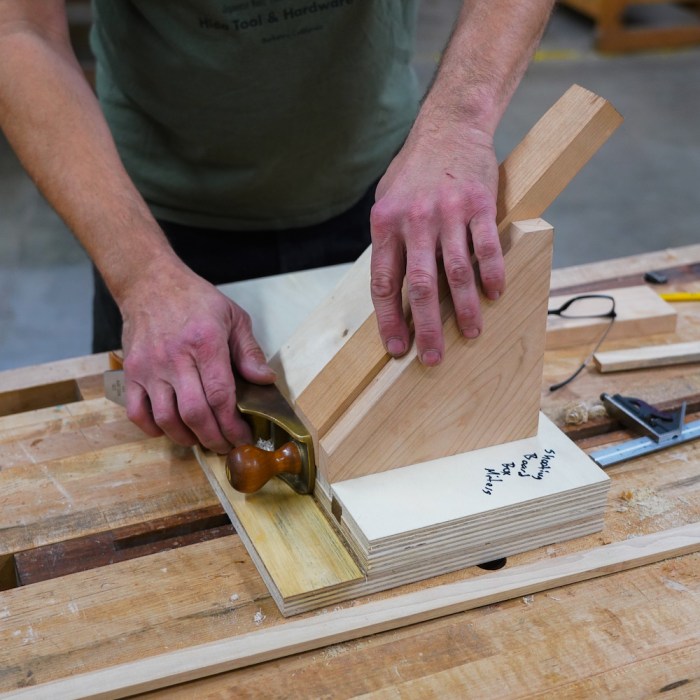
Woodworking projects can range from simple to complex, providing a rewarding experience for both beginners and experienced craftspeople. They offer a unique opportunity to combine creativity with practical skills, resulting in functional and aesthetically pleasing pieces.
Popular Woodworking Projects
Popular woodworking projects cater to a wide range of interests and skill levels. Here are some examples:
- Beginner Projects:
- Cutting Boards: Simple to make, cutting boards are practical and can be personalized with different wood types and designs.
- Birdhouses: A classic beginner project, birdhouses provide a fun and functional way to attract feathered friends to your garden.
- Simple Shelves: Shelves are a versatile project that can be used in various rooms, and they can be customized to fit specific needs.
- Intermediate Projects:
- Coffee Tables: Coffee tables require more intricate joinery and woodworking skills, offering a chance to create a unique centerpiece for your living room.
- Outdoor Benches: Outdoor benches are a great way to enhance your backyard or patio, and they allow you to experiment with different wood types and finishes.
- Small Storage Cabinets: Small storage cabinets provide a practical solution for organizing various items, and they offer a chance to explore different design elements and joinery techniques.
- Advanced Projects:
- Custom Furniture: Advanced projects involve creating bespoke furniture pieces, requiring meticulous planning, precise execution, and a high level of woodworking expertise.
- Intricate Wood Carvings: Wood carving demands exceptional skill and patience, allowing craftspeople to create intricate and detailed pieces of art.
- Wooden Boats: Building wooden boats is a highly challenging project, requiring extensive knowledge of boat construction, woodworking techniques, and specialized tools.
Design Principles for Woodworking Projects
Creating successful woodworking projects involves considering various design principles to ensure functionality, aesthetics, and longevity. Here are some key considerations:
- Functionality: The project should serve its intended purpose effectively. This includes factors like size, shape, and the placement of components.
- Aesthetics: The project should be visually appealing, incorporating elements like color, texture, and shape.
- Durability: The project should be built to last, using appropriate wood types, joinery techniques, and finishes.
- Safety: Ensure the project is safe to use, avoiding sharp edges or unstable structures.
- Ergonomics: Consider the comfort and ease of use for the intended users, particularly for furniture projects.
Woodworking Project Ideas with Difficulty Levels
| Project Idea | Difficulty Level |
|---|---|
| Simple Cutting Board | Beginner |
| Birdhouse | Beginner |
| Small Bookshelf | Intermediate |
| Outdoor Picnic Table | Intermediate |
| Custom Kitchen Cabinets | Advanced |
| Intricate Wood Carving | Advanced |
Woodworking Safety and Best Practices
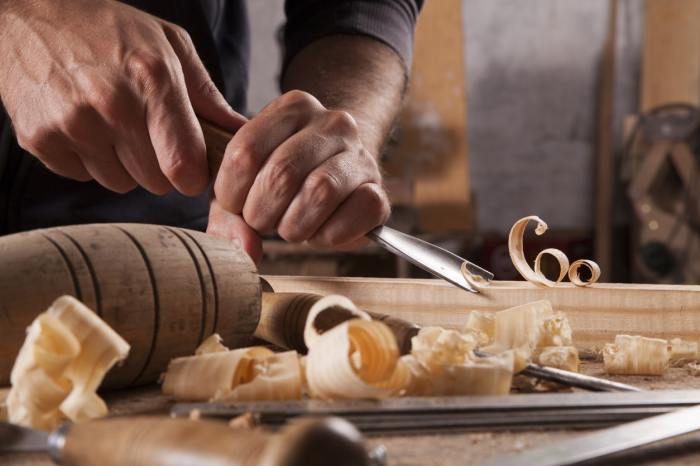
Woodworking is a rewarding hobby and a valuable skill, but it’s essential to prioritize safety. Accidents can happen, but with proper precautions and techniques, you can significantly reduce the risk of injury. This section covers essential safety practices and equipment, emphasizing the importance of a safe and responsible approach to woodworking.
Essential Safety Precautions
Safety in woodworking is paramount, and a few key practices can significantly reduce the risk of accidents. Here’s a summary of crucial safety precautions:
- Always wear safety glasses or goggles to protect your eyes from flying debris.
- Use hearing protection, such as earplugs or earmuffs, to protect your hearing from loud machinery.
- Wear a dust mask or respirator to prevent inhaling wood dust, which can be harmful to your respiratory system.
- Keep your work area clean and organized to prevent tripping hazards and clutter.
- Use proper lifting techniques to avoid strains and injuries.
- Always use tools according to their intended purpose and manufacturer’s instructions.
- Never operate machinery while tired or under the influence of drugs or alcohol.
- Be aware of your surroundings and keep a safe distance from moving machinery.
- Always disconnect power tools from the power source before making adjustments or cleaning them.
- Keep blades and cutting tools sharp to reduce the risk of kickbacks and accidents.
Woodworking Safety Equipment
Having the right safety equipment is essential for woodworking. Here’s a list of essential safety gear and their proper usage:
- Safety Glasses/Goggles: Protect your eyes from flying debris. Choose goggles with side shields for maximum protection.
- Hearing Protection: Earplugs or earmuffs can reduce the noise level of woodworking machinery, protecting your hearing.
- Dust Mask/Respirator: A dust mask or respirator is crucial for filtering out wood dust, which can cause respiratory problems.
- Work Gloves: Gloves provide protection for your hands from cuts, splinters, and other injuries.
- First-Aid Kit: A well-stocked first-aid kit is essential for treating minor injuries.
- Fire Extinguisher: Keep a fire extinguisher readily available in case of fire.
Proper Tool Handling Techniques
Proper tool handling is crucial for safety and efficiency. Here are some key techniques:
- Power Tools: Always use power tools with a firm grip and keep your fingers away from the cutting edge. Be aware of the direction of the blade or bit and avoid using tools in a way that could cause kickback.
- Hand Tools: Use hand tools with a firm grip and keep your fingers clear of the cutting edge. Always use tools in a way that is safe and efficient.
- Materials Handling: Lift heavy objects with your legs, keeping your back straight. Use a dolly or hand truck to move heavy items, and always ask for help when needed.
Woodworking in Modern Society
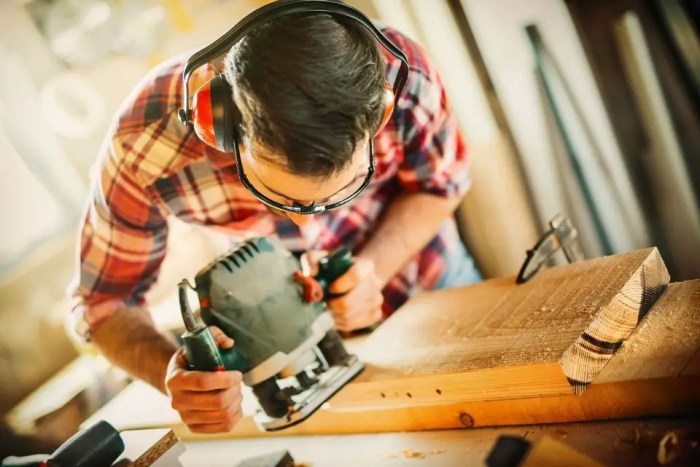
Woodworking has evolved from a traditional craft into a dynamic and multifaceted field, deeply intertwined with modern society. From the furniture we use to the structures that define our cities, woodworking plays a crucial role in shaping our environment and influencing our lives.
Woodworking in Contemporary Design and Furniture Making
The role of woodworking in contemporary design and furniture making is characterized by a renewed appreciation for natural materials, craftsmanship, and sustainability. Contemporary furniture designers often integrate woodworking into their creations, seeking to create pieces that are both aesthetically pleasing and functional. The use of wood in furniture making adds warmth, texture, and a sense of authenticity to modern interiors.
Woodworking and Sustainability
Woodworking is inherently linked to sustainability, as wood is a renewable resource. The use of sustainable forestry practices ensures that wood is harvested responsibly, allowing for the regeneration of forests and the preservation of biodiversity. The growing demand for sustainable products has led to a surge in interest in eco-friendly woodworking practices, including the use of reclaimed wood and the adoption of environmentally friendly finishes.
Technology and Innovation in Woodworking
Technology has revolutionized woodworking practices, introducing new tools, techniques, and possibilities. Computer-aided design (CAD) software allows for precise design and modeling of woodworking projects, while computer-aided manufacturing (CAM) machines enable the efficient and accurate production of complex wooden components. 3D printing technology is also making its mark on woodworking, offering innovative solutions for creating intricate designs and prototypes.
Last Word: Woodworking
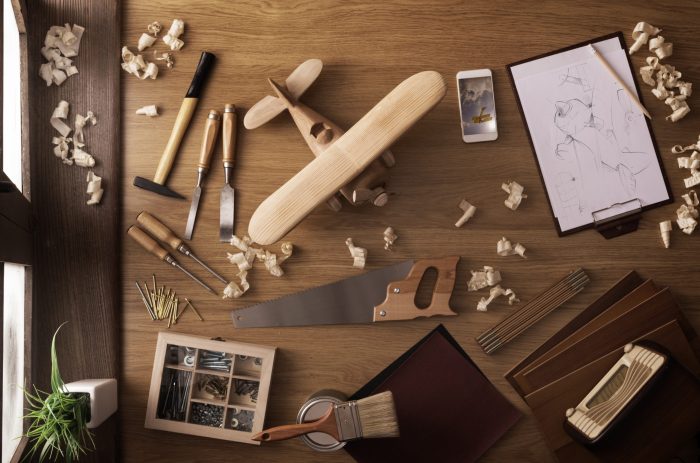
As we journey through the world of woodworking, we discover not just a craft, but a reflection of human ingenuity and artistry. From the ancient traditions passed down through generations to the innovative techniques shaping the future, woodworking remains a vibrant testament to our connection with nature and our boundless capacity for creativity.
FAQ Insights
What are the basic woodworking tools I need to start?
Essential tools include a saw, hammer, screwdriver, measuring tape, and a level. You can gradually add more specialized tools as you gain experience.
What are some beginner-friendly woodworking projects?
Simple projects like cutting boards, birdhouses, or small shelves are great starting points. You can find many free plans online.
How can I learn more about woodworking?
There are numerous online resources, books, and woodworking classes available to help you develop your skills.
Woodworking is a craft that requires both skill and patience. If you’re looking for a comprehensive resource to learn the basics and beyond, check out this tedswoodworking review. It’s a great way to find out if Teds Woodworking is right for you and whether it can help you master the art of woodworking.

